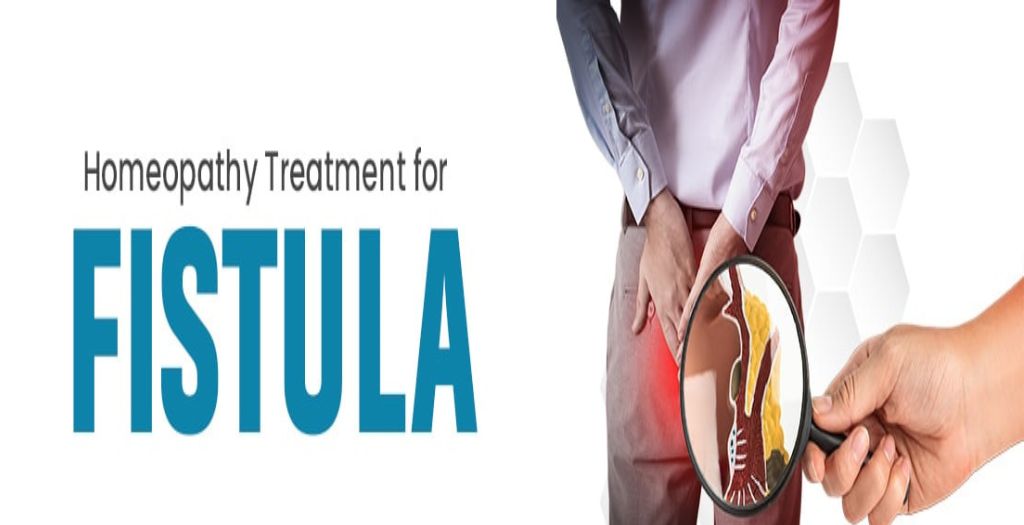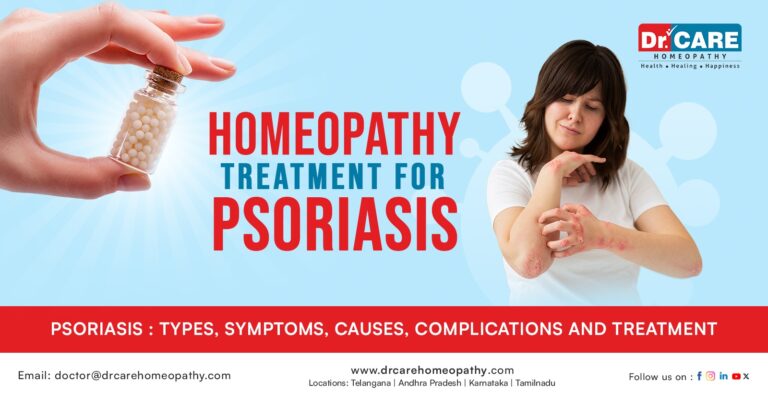Millions of people suffer from fistula, but what, exactly, is it? In truth, millions of people around the world are afflicted by the symptoms of fistula. Let us look into the issue and learn the causes, treatment, and prevention in detail.
Fistula Definition
A fistula, in anatomical terms, is an abnormal connection or passageway between two organs or vessels of the body, which is generally not connected. Natural pathways exist, but they are turned into a tunnel-like tract by injury, infection, or inflammation.
Fistula Meaning
The word “fistula” owes its origin to the Latin translation meaning “pipe.” In medical terms, fistula refers to an abnormal connection formed between a set of organs or vessels that do not naturally connect.
Fistula Prevalence
Among adult patients presenting with anorectal problems in India, the prevalence of anal fissures was 17.8%. This finding implies that one out of every six patients with any anorectal issue has anal fissures as the underlying pathology. Moreover, this study also found an alarming prevalence of anal fissures among the Indian adult population, emphasizing the need for early detection and effective management strategies for anal fissures.
Fistula Risk Population
Several risk factors may raise the risk of developing a fistula. These factors include a history of inflammatory bowel disease, pelvic infections, radiation therapy, certain surgical interventions, and extended pressure or injury to a specific area of the body.
Types of Fistula
Based on the area where fistula occurs, fistulas can be classified as follows: stool passage areas:
Anal fistula:
This fistula develops between the external opening of the anal and the perianal skin. It is typically a complication and sequel of an anorectal abscess.
Rectovaginal fistula:
The fistula that occurs between the rectum and the vagina is an abnormal aperture of stool or gas passage through the vagina. Rectocele and rectal prolapse, as well as inflammatory bowel disorders and postoperative complications, can all cause rectovaginal fistula.
Vesicovaginal fistula:
Concreated fistula between the bladder and vaginal secrete urine pathologically through the vagina. It occurs mostly as the outcome of obstetric birth injury or pelvic surgery.
Enterovesical fistula:
This fistula is a pathologic connection between the intestines and the urinary bladder. Intestinal bacteria can cause various bladder and even renal infections. It is most frequently the result of inflammatory diseases of the intestines, as well as diverticulitis or colorectal cancer, and can be potentially the consequence of gynecological cancer treatments in which pelvic irradiation was given.
Enterocutaneous fistula:
An abnormal fistula exists between the epithelia and the integumentary canal. It often occurs after surgeries to unveil inflammatory bowel disease and posttraumatic openness of gut space forming or dissociating epithelia.
Arteriovenous fistula:
This type of fistula occurs between the artery and the vein and alters the flow of blood to the area. This injury may happen due to an inborn irregularity, wound, or operation or afterward malignant and radiation treatments. Other fistulas are peritoneal tubes and topically associated with the skin.
Perianal fistula:
This fistula develops into an anorectal fistula and is usually composed of several channels and ventrals in an indrawn subcutaneous circle around the rump.
Gastrocutaneous fistula:
A cutaneous fistula from the tolerance or bay window is fistulizing pertinaciously or inefficiently with the dermoid surface. It occurs more frequently after an operation from a wound abdominal damage or postoperative operations.
Obstetric fistula:
This is the most devastating form of fistula relating to women’s health.
Fistula Stages
Fistulas can go through different stages, with each stage having distinct features and presentations. The staging of the fistula mainly depends on the area and the type of fistula, but some general stages of fistulas can be outlined as follows:
Stage 1:
The first stage of the fistula can be identified as the acute stage. Its features include the fact that the fistula is either newly formed or has recently occurred. Patients in the acute stage of the fistula may experience localized pain, swelling, redness, and tenderness at the site of the fistula. Depending on the occurrence of localized infections, systemic signs and symptoms such as fever and pus discharge may also be present. Compliance with medical recommendations during the acute stage is crucial in preventing further complications and seeking the proper treatment.
Step 2:
The next stage is the chronic stage, which occurs if the acute stage is not appropriately addressed. Although the systemic inflammatory symptoms subside, the abnormal connection persists. Chronic fistulas can manifest with less severe but chronic symptoms. These can be the drainage of fluid, pus, or stool, episodic pain or discomfort, and recurrent infections. The chronic stage may persist for an extended period and seriously impair patients’ quality of life, necessitating symptomatic treatment.
Step 3:
The complicated stage is the next one and can be formed due to the occurrence of complications. Comorbidities with the secondary infection, abscess in the surrounding tissues, or fistula connection and invasion of nearby structures may be possible. It can lead to very severe and severe symptoms of discomfort and infection.
Step 4:
Finally, the healed stage is the last one and can be reached if the treatment is successful. Some fistulas indeed heal completely, and the connection between the fistula and the tubule is closed. There are no symptoms, and follow-up care should be conducted.
Fistula Causes
Fistulas may emerge from a wide range of underlying causes, all of which contribute to the development of abnormal connections between organs, tissues, or vessels. Some of the most common causes of fistulas include the following:
Extensive inflammatory conditions:
Fistulas often form as a result of a lack of regulation of chronic inflammatory diseases. Inflammatory bowel disease leads to the development of fistulas in the gastrointestinal tract because of long-term inflammation, ulceration, and tissue destruction.
Infections:
IInfections cause tissue degeneration and necrosis, which eventually leads to abscess formation and further fistula growth. Perianal abscesses, pelvic inflammatory disease, and sexually transmitted infections may all result in fistula development if caused by untreated declension or poor control.
Traumatic injuries:
Penetrative wounds, catastrophic trauma, or surgical complications damage tissue integrity and create one or more abnormal connections. Depending on the location of the injury and its severity, a lesion may occur in many anatomical sites due to traumatic events.
Obstetric Complications:
Obstetric fistulas are common in regions where women have inadequate access to essential maternal services. Fistulas associated with vaginal distension and obstetric trauma, such as v.v.f. and r.v.f., are caused by crowding and vaginal abrasions.
Inflammatory or infectious processes:
Chronic infections or inflammatory processes involving specific anatomical areas may predispose people to fistula formation. Diverticulitis, appendicitis, and tuberculosis are a few examples of gastrointestinal or genitourinary tract pathologies that may cause fistulas.
Malignancies:
Any tumor or cancer affecting adjacent organs or neighboring tissues may erode through normal anatomical barriers and initiate the formation of fistulas. As a tumor, such as colorectal, bladder, or cervical cancer, grows and invades surrounding structures, fistulas may develop.
Congenital anomalies:
It is important to note that, on rare occasions, fistulas may also occur as congenital abnormalities or developmental errors during fetal development. Congenital fistulas usually imply abnormal connections between various organs or tissues that require surgical correction.
Knowledge of the possible causes of fistula allows one to contribute to timely intervention, appropriate treatment of the primary driving factors, and measures for the prevention of its occurrence and development.
Fistula Symptoms
Fistulas may present with numerous symptoms depending on the type, location, severity, and etiology of the abnormal connection. The following are typical symptoms of this health condition that affected individuals may experience:
- Abnormal discharge
- Pain or discomfort
- Swelling and inflammation
- Skin changes
- Foul odor
- Trouble passing stool
- Recurrent infections
- Systemic symptoms
- Psychological distress
Abnormal discharge:
A classic sign of fistulas is an abnormal secretion observed in the affected area. The discharge can vary in color, consistency, and content, as it may be purulent, mucoid, bloody, or fecal.
Pain or discomfort:
Patients affected by fistulas can experience pain and discomfort in an abnormal connection site. The pain may be acute or dull, sharp or dragging, or continuous or intermittent.
Swelling and inflammation:
Fistulas can lead to inflammatory processes and swelling of surrounding tissues. Redness, warmth to touch, and tenderness might also be present.
Skin changes:
Fistula tracts can cause changes in skin integrity at an abnormal site, and the affected area might become irritated and reddened with sore or ulcer development. The skin may also change its coloration and texture.
Foul odor:
Discharged from a fistula can have a specific stench, which is caused by bacteria and decomposed cells present in the discharge.
Trouble passing stool:
When the fistula is present in the gastrointestinal or urinary system, it can cause blockage or trouble with defecation or micturition.
Recurrent infections:
A weakened immune system and compromised local conditions may lead to numerous infections and inflammations in the area.
Systemic symptoms:
In severe cases or complications, patients may also develop fever, deterioration, and chills, depending on the infection.
Psychological distress:
Patients suffering from chronic discharges that have a bad smell and are visible to others may experience depressive episodes or anxious feelings related to others finding out. Therefore, it is crucial to identify these signs and respond quickly.
Fistula Complications
The complications resulting from a fistula may range from mere discomfort and inconvenience to severe medical conditions including the following:
Chronic infection:
The continuous drainage of fluid or discharge from the fistula site may cause chronic infection. It might occur as recurrent episodes of cellulitis, abscesses, or even systemic infections that necessitate frequent administration of antibiotics or surgical drainage.
Skin and tissue destruction:
The leakage of fluid or discharge from the fistula site may irritate the surrounding skin and cause it to break down. Consequently, ulcers or sores and even new fistula tracts extending deeper into the body may develop.
Malnutrition and dehydration:
Gastrointestinal tract fistulas cause nutrient and electrolyte malabsorption and, as a result, malnutrition and dehydration. The chronic loss of fluids through the fistula site contributes to electrolyte imbalances and nutritional deficiencies when left untreated.
Fistula recurrence:
The condition may relapse even after successful treatment, particularly if the underlying causes or contributing factors remain unaddressed. A recurrent fistula may be difficult to manage and require additional or more complex interventions or surgical procedures to resolve.
Fecal or urinary incontinence:
If the rectum, bladder, or urethra are involved, the fields produce fecal or urinary incontinence, respectively.
Organ dysfunction:
In rare severe situations or cases of complications, the field may cause organ or peripheral tissue dysfunction or injury. For instance, bowel obstruction, and perforation due to fistula formation with adjacent bulbous organs such as the bladder.
Fistula Diagnosis
Diagnosis of a fistula typically requires a thorough medical history review, physical examination, and diagnostic tests to identify the location, type, and underlying etiology of the fistula. Below is an overview of the diagnostic approach to fistula:
Medical history review:
The clinician will begin with a detailed history, including symptoms, past medical conditions, surgical history, and prior interventions related to fistulas or similar pathologies.
Physical examination:
This is performed to assess the site of the lesion and abnormalities that align with a fistula. The skin may show signs of inflammation, edema, erythema, and purulent or serous discharge. A digital rectal or vaginal examination is performed Where the fistula is located in the anorectal or genital area, respectively.
Imaging:
imaging modalities such as ultrasound, magnetic resonance imaging, and computed tomography imaging are used to evaluate the internal organs or areas and the path of the fistula. Endoscopy may be used to visualize the luminal surfaces of the organs, such as the bladder via a cystoscope.
Contrast studies:
Contrast studies such as fistulography allow a radiographic study that shows a duct or passage made by diseased flesh. Laboratory tests to investigate for infection and inflammation culture and sensitivity test.
Laboratory tests:
Blood tests and cultures may be conducted to detect signs of infection, inflammation, or systemic illness associated with the fistula. Laboratory tests, including a complete blood count, inflammatory markers, and cultures to grow and identify specific pathogens.
Biopsy:
A biopsy of the involved tissue may be taken and evaluated for underlying inflammatory conditions or malignancies and other conditions that cause or are caused by the fistula.
When applied as a combination, these approaches enable healthcare professionals to make an accurate diagnosis of fistula presence and etiology and develop a customized patient-centered treatment plan.
Fistula Prevention
Prevention of fistulas includes addressing the underlying risk factors and adopting several measures to decrease the chances of fistula development. The following strategies contribute to fistula prevention:
Proper hygiene practices:
Maintaining proper hygiene, particularly in the perianal and genital areas, can prevent possible infection, which might trigger fistula formation. People should wash the affected areas regularly with mild soap and water, ensure they remain dry and clean, and avoid irritants and harsh chemicals.
Lifestyle choices:
Consuming a balanced diet, drinking sufficient amounts of water, and avoiding behaviors associated with the increased chance of developing gastrointestinal or urinary infections help prevent fistulas. Both smoking and excessive alcohol consumption should be eliminated from one’s lifestyle. Moreover, people should engage only in protected sex to avoid sexually transmitted diseases.
Prompt infection treatment:
People should treat infections, such as abscesses, cellulitis, and UTI, promptly to prevent complications that might lead to fistula formation. Seeking medical help at the first signs of infection and following the prescribed treatment are central to preventing fistulas.
Management of existing medical issues:
Individuals with existing chronic illnesses, such as IBD, PID, and diabetes, should work closely with medical professionals to manage their condition well. Proper inflammation control and immune function optimization, as well as other preventive measures, help in risk reduction.
Avoiding trauma:
Taking preventive measures and avoiding trauma shapes can help prevent fistula development. Proper lifting techniques, reducing the sitting time, and reducing strain on the bowel are important.
Regular check-ups:
Routine check-ups help identify and target potential risk factors, including IBD, pelvic infections, and malignancies. Regular screening leads to early detection and intervention.
Obstetric care:
It is important to have access to qualified obstetric care while being pregnant and during the delivery process to prevent the development of obstetric fistulas. Regular prenatal check-ups, a skilled professional during delivery, and appropriate timely intervention in cases of prolonged labor or obstructed labor can prevent complications that cause injuries and the development of fistulas.
Fistula Treatment at Home
Fistula home remedies and self-care measures do not cure fistulas but may reduce the symptoms and support the healing process. Here are some home treatments and care that might help reduce the symptoms and ease the healing process:
Warm Compress:
Apply a clean, damp cloth, or towel soaked in warm water, to the affected area for 10-15 minutes several times per day. This shall help to reduce the pain, swelling, and inflammation before seeing a doctor.
Sitz Bath:
Fill the bathroom or basin with warm water and ingest the affected anorectal or genital area for about 10-15 minutes several times a day, depending on availability. The process can be more effective with the addition of Epsom salts or baking soda.
Hygiene Practices:
Keep the affected area clean and dry and wash with gentle and mild soap once or twice a day and pat dry.
Dietary Changes:
Include a high-fiber diet, stay hydrated, and avoid exotic or irritating foods to ensure regular bowel movements and avoid excessive straining.
Topical Treatments:
Over-the-counter medications are also effective in reducing inflammation and pain in the perianal regions.
Avoid Irritants:
Deprive from sitting for long hours and excessive straining while passing stool. Avoid straining during sexual intercourse and activities that can cause abrasion and inflammation of the affected area.
Fistula Treatment in Homeopathy
At Dr. Care Homeopathy, we provide all-rounded treatment for fistula rather than just dealing with the symptoms. We offer patient-centered care, whereby we recognize each patient’s unique components that contribute to fistula development. Our consultations are detailed, enabling us to identify the probable underlying causes and triggers that lead to the aggregation. Our treatment strategy centers on dealing with the underlying causes to efficiently and effectively eliminate the symptoms. Our large goal is to ensure that patients experience healing that lasts and prevents future recurrences. We ensure patient safety, our treatment is safe since it has few adverse side effects experienced when using conventional medication. Also, our medication is individualized and is selected based on the patient. We ensure that it does not cause long-term side effects and promote patient well-being. Consequently, patients are actively engaged in the process of self-healing, which would empower them in their eventual healing and eliminate the possibility of future recurrence. With Dr. Care Homeopathy, you are assured of reliable, safe, and individualized treatment of fistulas.





